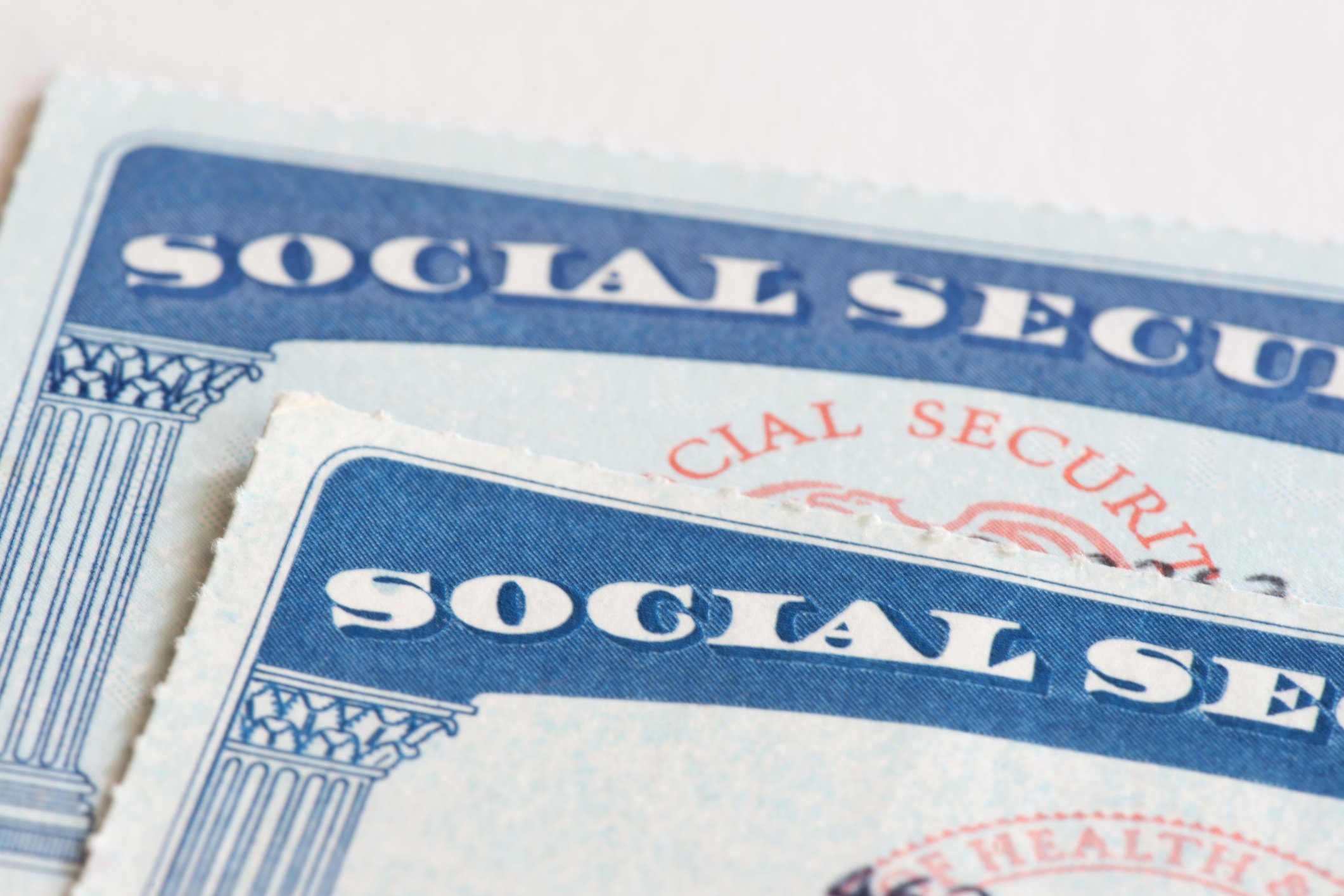I have good news and bad news when it comes to Social Security.
On the bright side, despite fears of the program becoming insolvent or going belly up, there's virtually no chance of Social Security disappearing. Even though the latest Social Security Board of Trustees report highlighted a $13.9 trillion cash shortfall between 2035 and 2093, which clearly has a lot of folks worried that the program will simply cease to exist when they retire, this isn't the case.
Social Security's two sources of recurring income -- the 12.4% payroll tax on earned income and the taxation of benefits -- ensure that there will always be money flowing into the program to pay eligible beneficiaries. With the exception of Congress changing how Social Security is funded, it simply can't go bankrupt, and will therefore be there for you when you retire, whether that's soon or many decades from now.

Image source: Getty Images.
On the other side of the coin, Social Security's ability to maintain its existing payout schedule, inclusive of cost-of-living adjustments (COLA), isn't looking too hot. Without the addition of new sources of revenue, extensive cost cuts, or some combination of the two, current and future retired workers could be facing an estimated 23% cut to benefits by 2035. That's a big problem when more than three out of five current retirees lean on the program for at least half of their monthly income.
Social Security's problems aren't as cut-and-dried as you might think
What you're probably wondering is how the outlook for the most successful social program in our nation's history has declined so quickly. The answer turns out to be not as simple as you might think.
As you're probably aware, baby boomers have been leaving the workforce for years, and the influx of new workers is simply not enough to keep the worker-to-beneficiary ratio from declining. Also, increased longevity, when examined over many decades, has allowed folks to pull a payout from Social Security for decades, rather than years, and has weighed on the Social Security program.
But it's more than just "boomers are retiring" and "people are living longer." Social Security is contending with two issues that are largely flying under the radar that could accurately be described as "silent killers."

Image source: Getty Images.
Silent killer No. 1: Growing income inequality
One of the biggest issues that tends to fly under the radar is the impact widening income inequality is having on the program. The "rich getting richer" can have a negative impact on Social Security in two ways.
First, most American workers pay into Social Security via the 12.4% payroll tax on earned income. However, this tax is only applied to wages and salary (not investment income) of between $0.01 and $132,900. This $132,900 figure is known as the payroll tax earnings cap, and it adjusts upward each year in step with the National Average Wage Index.
The problem with this cap is that while more than 90% of workers will earn less than $132,900 in 2019, and are therefore taxed on every dollar they earn, a small percentage of workers earning above this amount will have some, or most, of their earned income exempted from the payroll tax. Since 1983, the amount of earnings exempted from the payroll tax has climbed from just over $300 billion to $1.2 trillion by 2016. That works out to about $150 billion in potential taxable revenue escaping the system each year, as of 2016.
According to the Board of Trustees' 2019 report, if the taxable ratio (i.e., the amount of earnings subject to the payroll tax each year) were to fall from 82.5% to about 81%, the long-term actuarial deficit for Social Security would climb by 17 basis points to 2.95%. In layman's terms, this means the payroll tax would need to rise by 2.95% today to offset the program's upcoming cash shortfall. I know that probably doesn't sound like a lot, but it would move Social Security's asset reserve depletion date forward by a year to 2034 from 2035, and it would require workers to pay an even higher payroll tax rate to account for an increasing amount of earned income escaping the payroll tax.

Image source: Getty Images.
The other problem with rising income inequality is that the rich are living substantially longer than low-income folks, who the program was first and foremost designed to protect. Although the Affordable Care Act has helped, the well-to-do are far more likely to have no financial constraints when it comes to getting preventative care, medical care, and prescription medicines. Meanwhile, low-and-middle-income individuals and families may not have this same preventative, medical, and prescription-drug access, leading to lower life expectancies.
Being well-to-do, the rich are not only able to pull in a Social Security benefit for a longer period of time than the typical retired worker, but their monthly payout is also likely to be far higher than the average worker's monthly benefit.
Silent killer No. 2: A persistent decline in birth rates
Social Security's other silent killer is the persistent decline in birth rates in recent years.
Shortly after the end of World War II, the U.S. saw a spike in baby births -- ergo the name "baby boomers" -- with a peak in average births per woman in the U.S. of 3.7. Though there have been modest peaks and troughs since then, the average birth rate has evened out around two lifetime births per woman for decades through about 2010.
However, since 2010 U.S. birth rates have fallen off a cliff, with the current rate of 1.76 births per woman representing a multidecade low. Various publications have pointed to millennials waiting longer to get married, having better access to contraceptives, and having fewer surprise pregnancies, as the reason for this somewhat persistent decline in birth rates over the past decade. A perceived-to-be weaker economy following the Great Recession is also to blame.

Image source: Getty Images.
The concern is that if birth rates continue to decline, or even if they level off well below the historic norm of two births per woman, there won't be enough workers a generation from now to support the number of retirees who'll then be leaving the workforce. In other words, yet another drop in the worker-to-beneficiary ratio may await.
The latest Social Security Board of Trustees report looked at various cost scenarios if the fertility rate declines to an average of 1.8 births per woman over the long term, and the results are scary. The actuarial deficit would climb by 44 basis points to 3.22% from 2.78%, with the annual balance of the program coming in at negative 5.63% by 2093. That's much higher than the negative 4.11% projected in 2093 at two births per woman.
There's no question that having kids is expensive. But if birth rates continue to decline or level off where they are now, Social Security's cash shortfall is going to be much worse than is currently projected.





